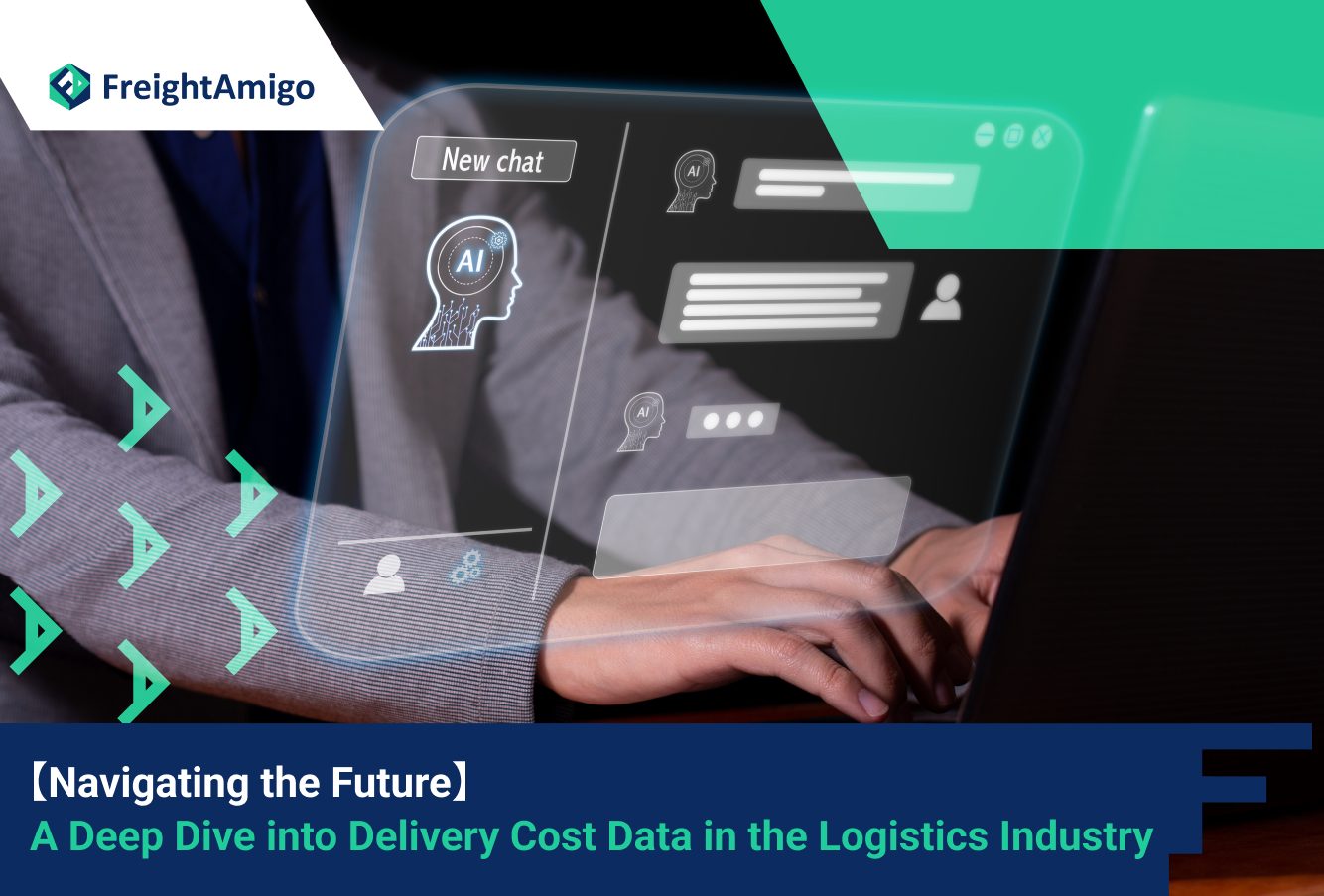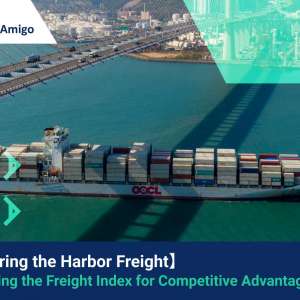In the fast-paced world of logistics, accurate and up-to-date information is crucial for making informed decisions. One such piece of information that holds immense significance is Delivery Cost Data. It refers to the pricing information associated with the transportation of goods from one location to another. It plays a vital role in the logistics industry, as it helps businesses determine the cost of shipping their products and plan their supply chain accordingly.
Delivery Cost Data provides insights into the current market conditions, allowing businesses to optimize their shipping strategies. By analyzing this data, companies can identify trends in pricing, understand the factors that affect freight rates, and make adjustments to their operations to improve efficiency and reduce costs. Whether it is negotiating contracts with carriers or planning routes, having access to accurate Delivery Cost Data is essential for staying competitive in the logistics industry.
Author Name: Aiden Ng – Marketing Analyst at FreightAmigo
Want to compare the best Express, Air Freight, Sea Freight, Rail Freight & Trucking rates so as to have better control on cost?
Sources of Delivery Cost Data
Obtaining reliable Delivery Cost Data is crucial for businesses looking to gain a competitive edge in the logistics industry. There are several sources from which companies can gather this information. One of the primary sources is freight rate marketplaces. These online platforms provide a centralized hub where shippers can compare and book transportation services based on real-time pricing information. By leveraging these marketplaces, businesses can access a vast database of the Data from multiple carriers, making it easier to find the best rates for their shipping needs.
Another valuable source of Delivery Cost Data is freight forwarders and logistics service providers. These companies have access to extensive networks of carriers and can provide businesses with comprehensive pricing information. They can also offer valuable insights and guidance based on their industry expertise, helping companies navigate the complex world of freight rates.
Additionally, industry associations and government agencies often publish reports and studies that include Delivery Cost Data. These reports can provide valuable insights into market trends, enabling businesses to make informed decisions about their shipping strategies.
Analyzing Delivery Cost Data for Business Insights
Raw Delivery Cost Data is just the beginning; the true value lies in the analysis and interpretation of this information. By analyzing it, businesses can gain valuable insights that can drive their decision-making processes.
One common analysis method is to compare historical Delivery Cost Data to identify trends and patterns. This analysis can help companies forecast future rates, enabling them to plan and budget more effectively. For example, if the data shows that freight rates tend to increase during certain months or in specific regions, businesses can adjust their shipping schedules or negotiate contracts accordingly.
Another approach is to analyze the data in conjunction with other data sets, such as sales data or inventory levels. By correlating these variables, businesses can identify relationships and uncover opportunities for optimization. For instance, if the data reveals that certain products have higher shipping costs but lower profit margins, companies may consider adjusting their pricing or exploring alternative transportation modes.
Challenges in Working with the Data
While Delivery Cost Data can provide valuable insights, working with this information comes with its fair share of challenges. One of the primary challenges is the sheer volume and complexity of the data. It encompasses a vast amount of information, including different shipping routes, carriers, and pricing variables. Managing and organizing this data can be a daunting task, especially for businesses with limited resources or outdated systems.
Another challenge is the lack of standardization in the industry. Freight rates can vary significantly based on factors such as the type of cargo, shipment size, and carrier preferences. This lack of standardization makes it difficult to compare rates across different carriers and can lead to discrepancies in data analysis.
Furthermore, Delivery Cost Data is highly dynamic and subject to frequent fluctuations. Market conditions, fuel prices, and carrier capacity can all impact freight rates, making it challenging to predict and plan for future costs accurately.
Tools and Technologies for Managing Delivery Cost Data
To overcome the challenges associated with managing Delivery Cost Data, businesses can leverage various tools and technologies. One such tool is a transportation management system (TMS). A TMS helps companies streamline their logistics operations by providing a centralized platform for managing Delivery Cost Data, carrier selection, and shipment tracking. With a TMS, businesses can automate processes, improve data accuracy, and gain real-time visibility into their supply chain.
Another technology that can assist in managing Delivery Cost Data is data analytics software. These tools enable businesses to process and analyze large volumes of data quickly, uncovering valuable insights and trends. By visualizing the data through interactive dashboards and reports, companies can make data-driven decisions and identify areas for improvement.
Additionally, cloud-based solutions offer scalability and flexibility, allowing businesses to store and access their Delivery Cost Data securely. These solutions provide a centralized repository for storing, managing, and sharing data, making it easier for teams to collaborate and make informed decisions.
Future Trends in the Data Analysis
As the logistics industry continues to evolve, so does the analysis of Delivery Cost Data. Several trends are shaping the future of Delivery Cost Data analysis, offering businesses new opportunities to optimize their operations.
One emerging trend is the use of artificial intelligence (AI) and machine learning (ML) algorithms to analyze Delivery Cost Data. These technologies can process vast amounts of data quickly and identify hidden patterns or anomalies. By leveraging AI and ML, businesses can gain deeper insights into their shipping costs, optimize routing, and identify potential risks or opportunities.
Another trend is the integration of Internet of Things (IoT) devices into Delivery Cost Data analysis. IoT devices, such as sensors and trackers, can provide real-time data on factors that affect freight rates, such as temperature, humidity, or location. By combining this data with freight rate information, businesses can optimize their supply chain and ensure the integrity of their cargo.
Furthermore, blockchain technology is gaining traction in the logistics industry. Blockchain offers a decentralized and secure platform for recording and verifying transactions, including Delivery Cost Data. By leveraging blockchain, businesses can improve transparency, streamline processes, and reduce the risk of fraud or data manipulation.
Conclusion
Delivery Cost Data plays a pivotal role in the logistics industry, enabling businesses to make informed decisions, optimize their operations, and stay competitive. By understanding the importance of Delivery Cost Data, exploring reliable sources, analyzing the information, and leveraging tools and technologies, companies can navigate the complexities of this data and unlock valuable insights. As the industry continues to evolve, embracing future trends in Delivery Cost Data analysis will be crucial for businesses looking to thrive in the ever-changing world of logistics.
There are different options for cargo transportation. If you want to choose the most convenient and suitable solution, it is best to have the full support of logistics experts! If you are planning to ship goods overseas, please go to the FreightAmigo page for inquiries.
===
Read More:
【From Data to Deals】How Freight Rate Data Can Transform Carrier Contract Negotiations
【From Data to Dollars】How Leveraging Freight Rate Data Can Drive Cost Savings in Logistics
【Shipping Cost Data】How It Can Revolutionize Your Logistics Operations
【Shipping Cost Data】Promoting Sustainability & Eco-Friendly Logistics Practices
===
If you have any inquiries on logistics/supply chain, feel free to contact FreightAmigo now:
Chat with us online OR
Phone : +852 28121686
WhatsApp: +852 27467829









































